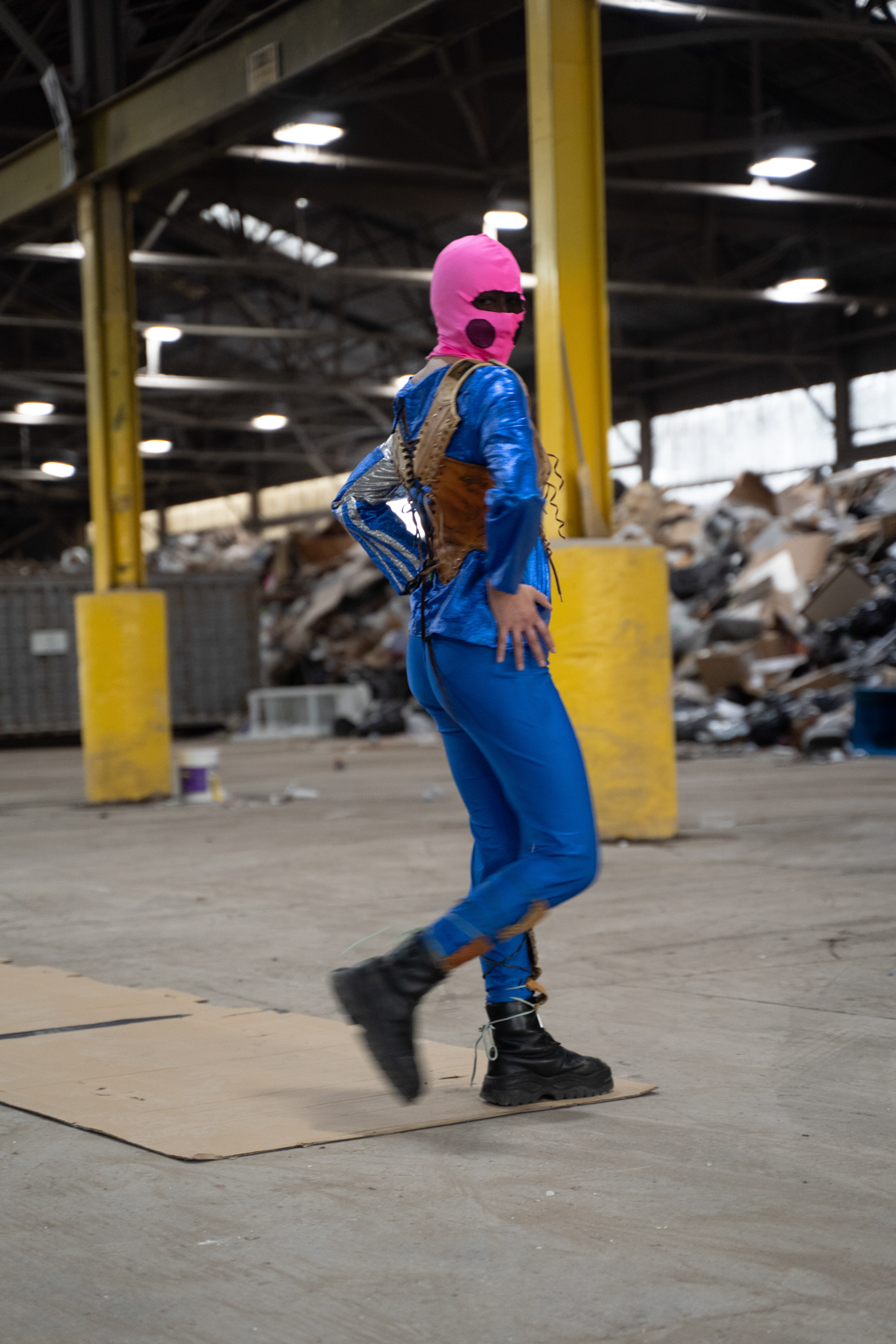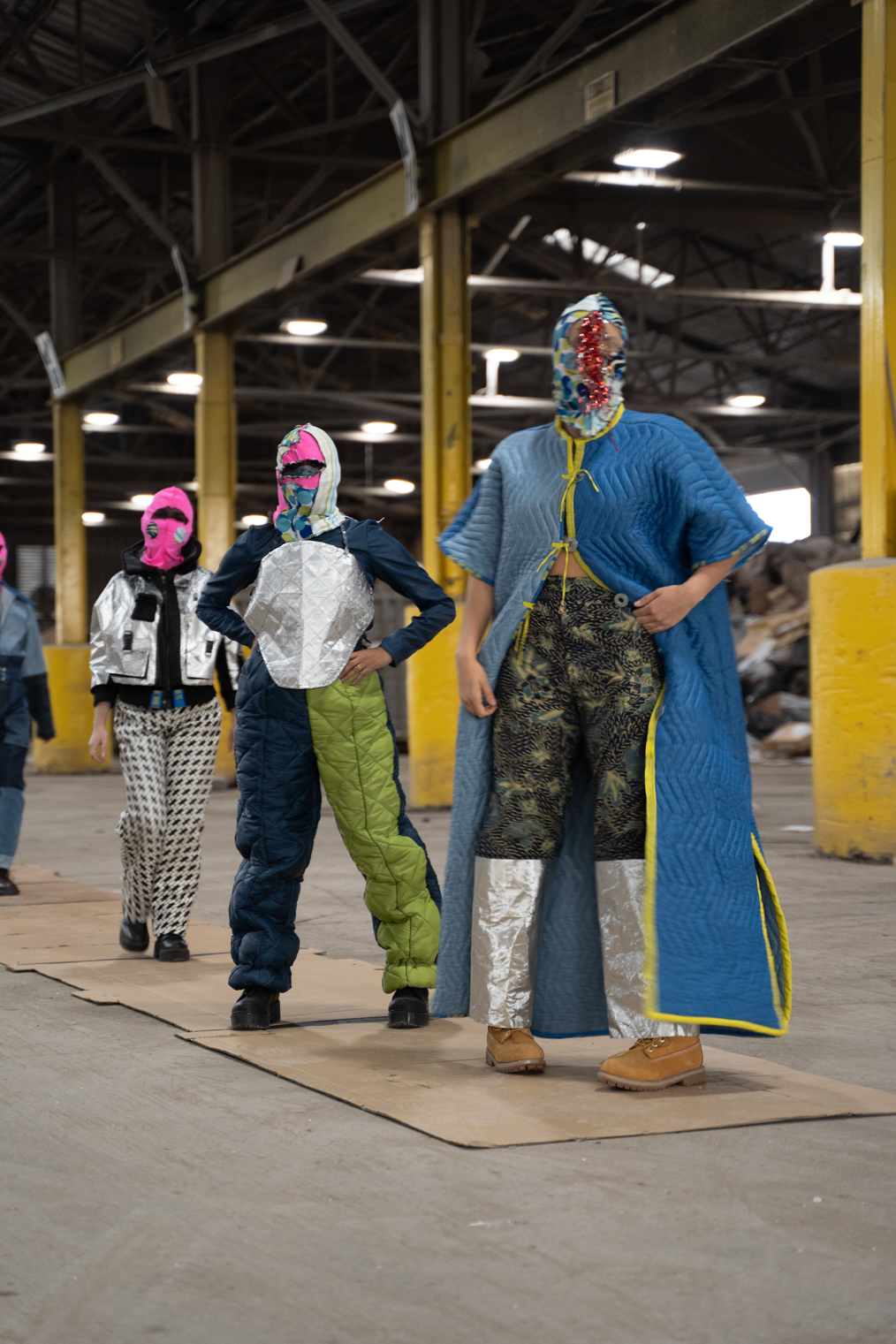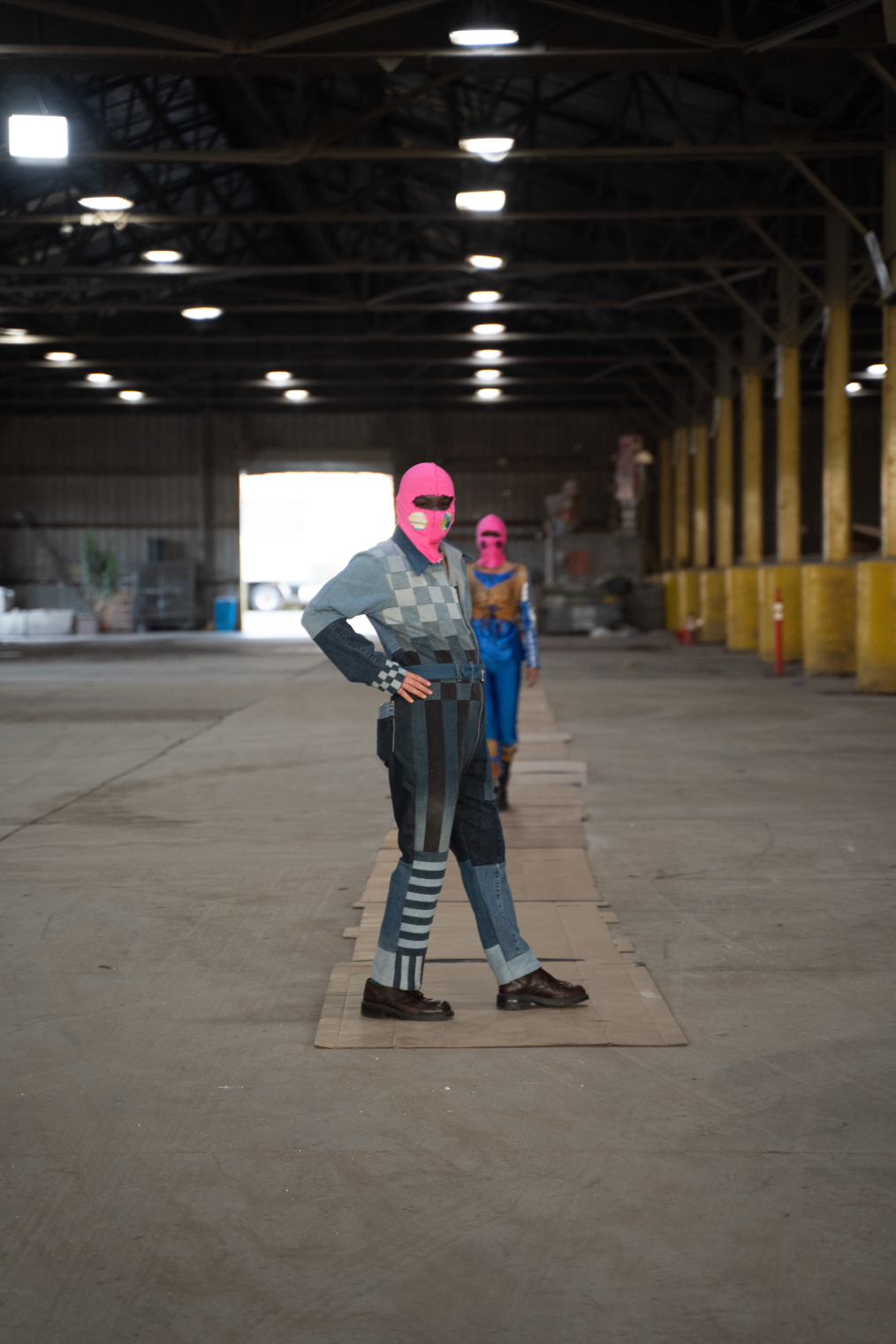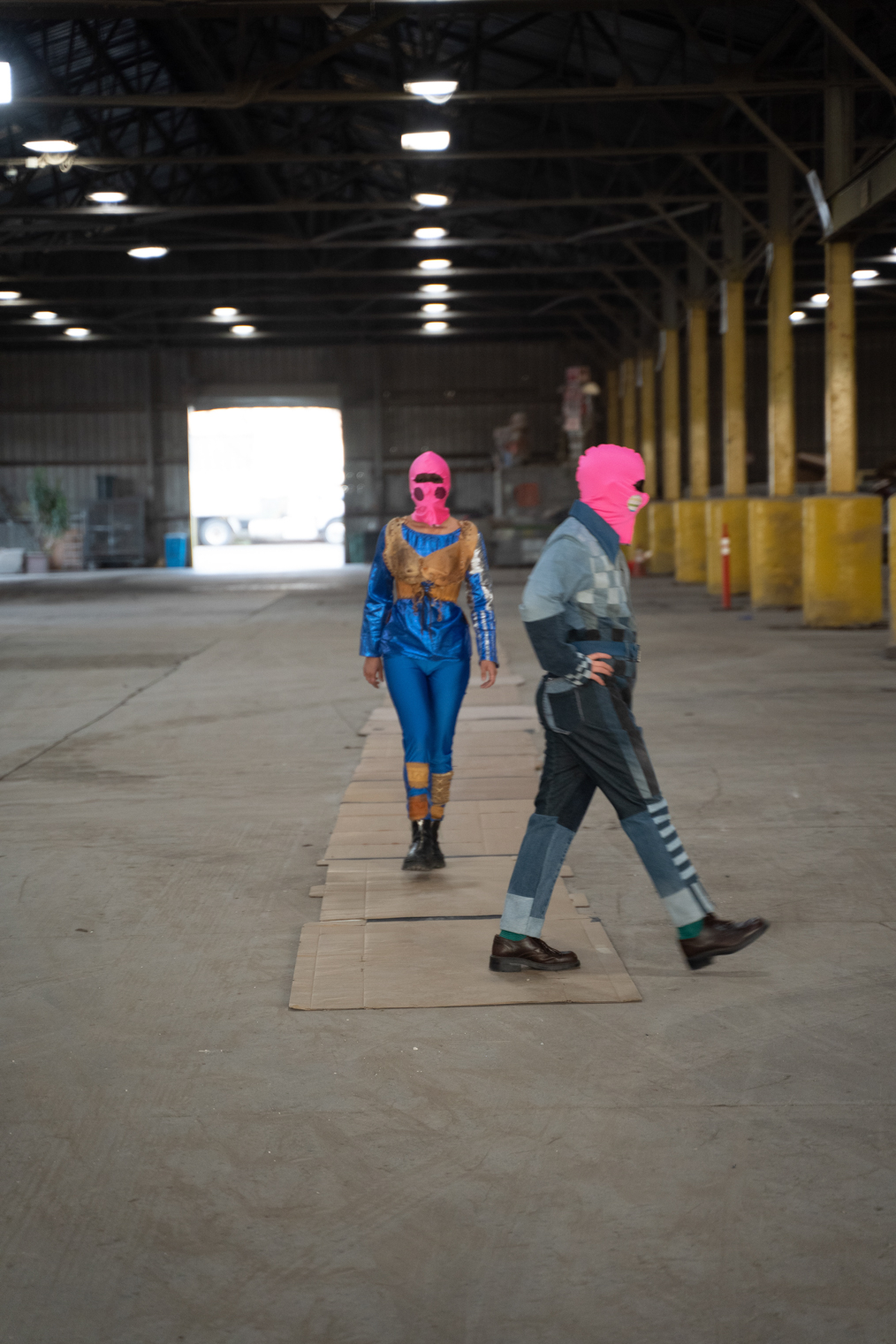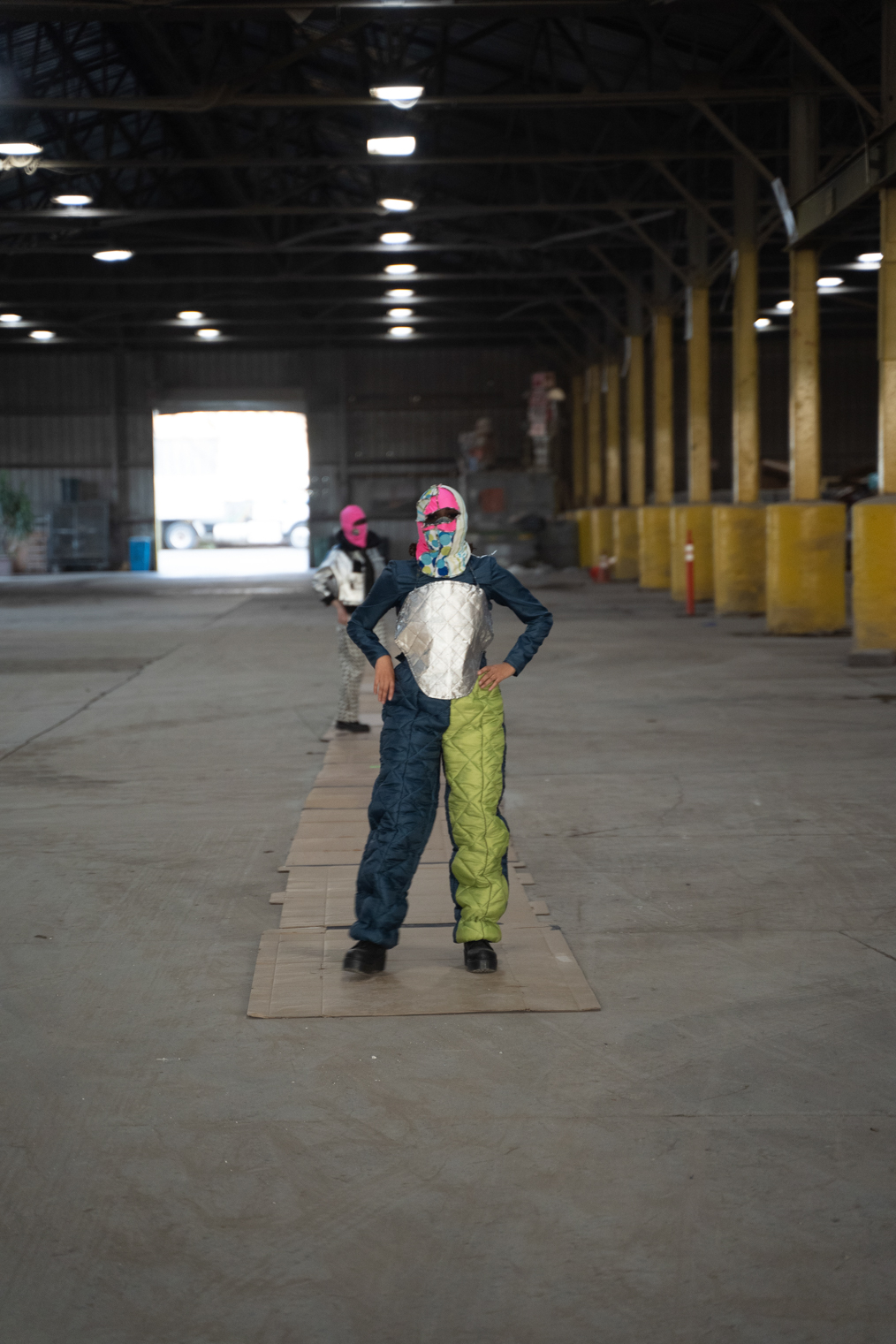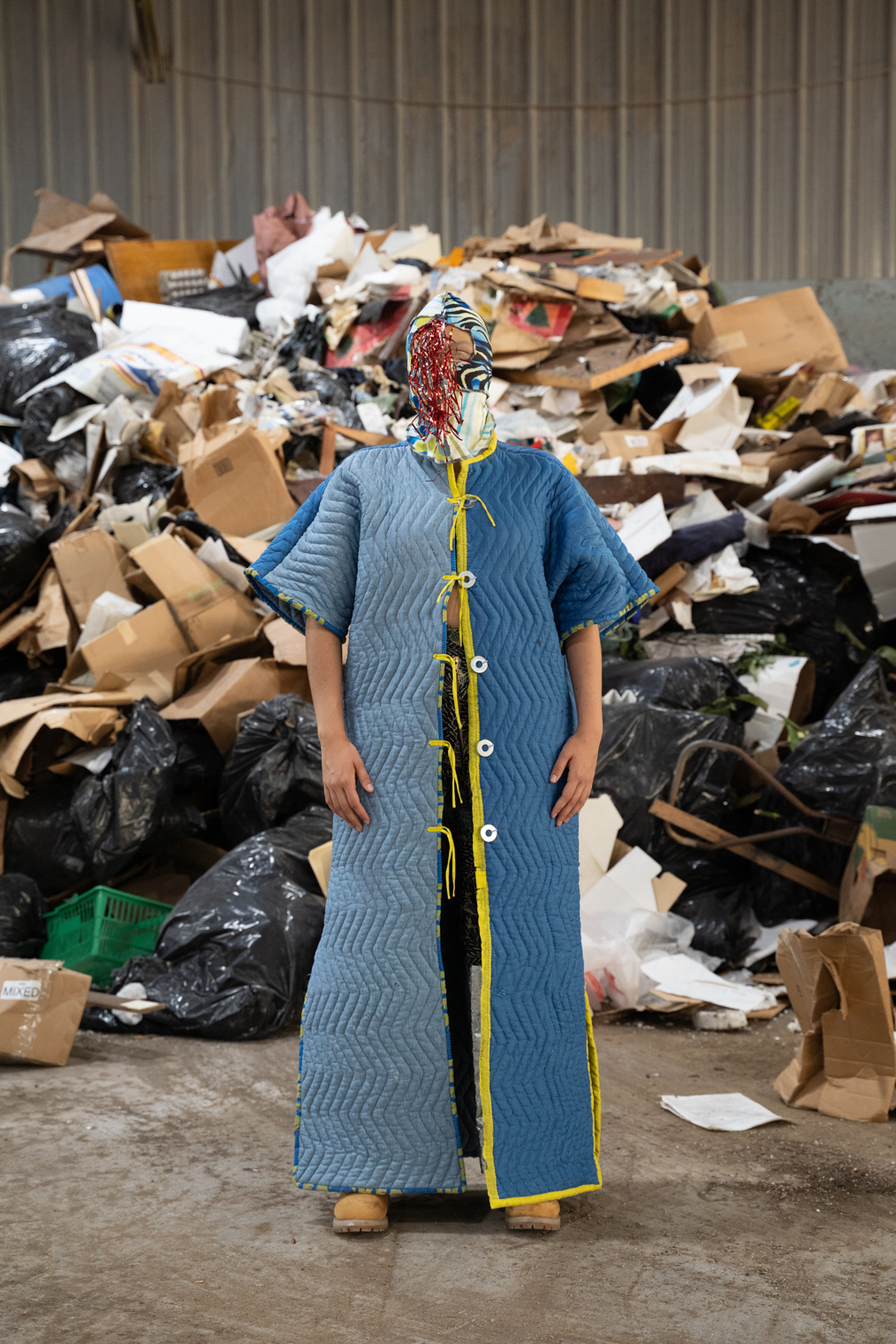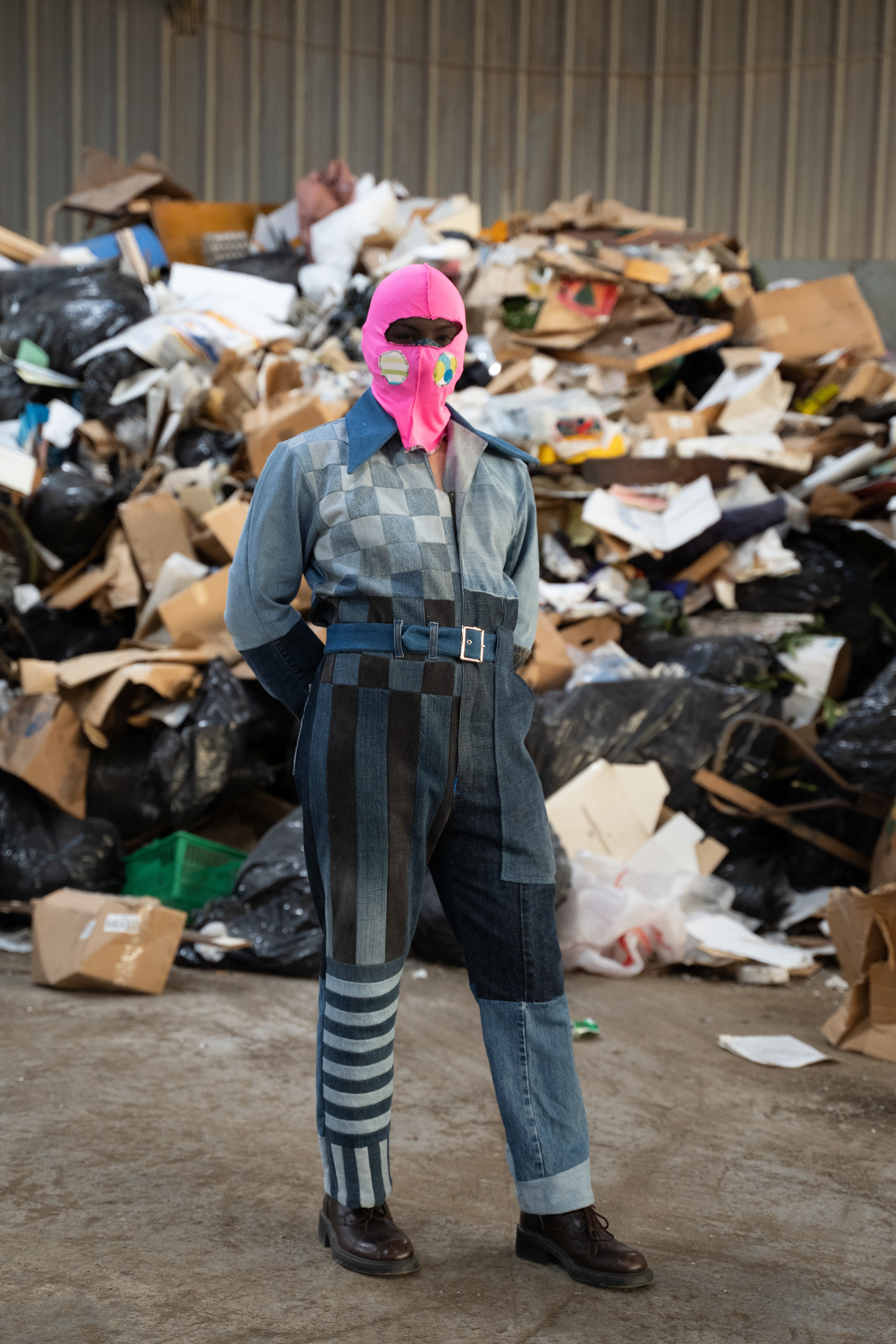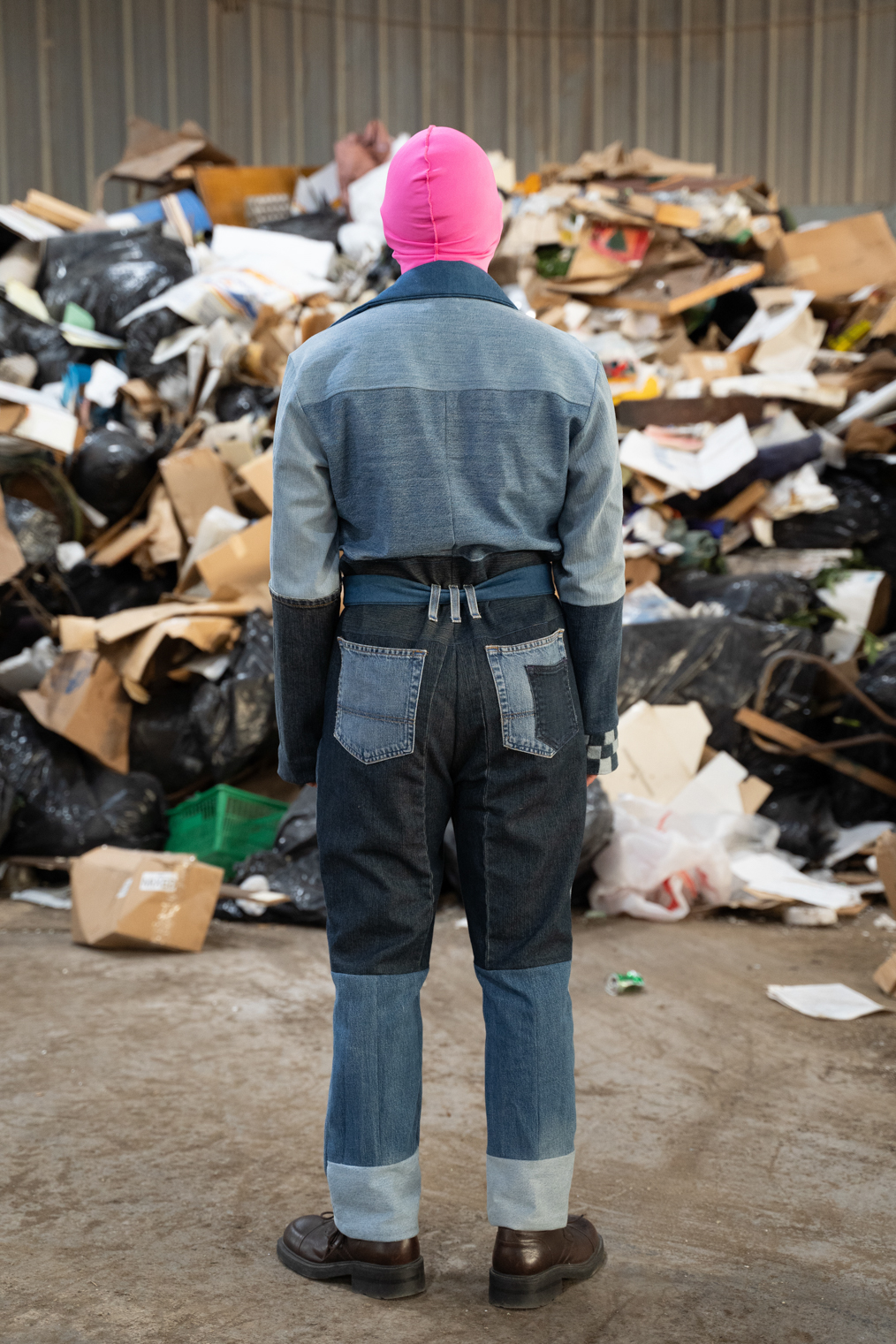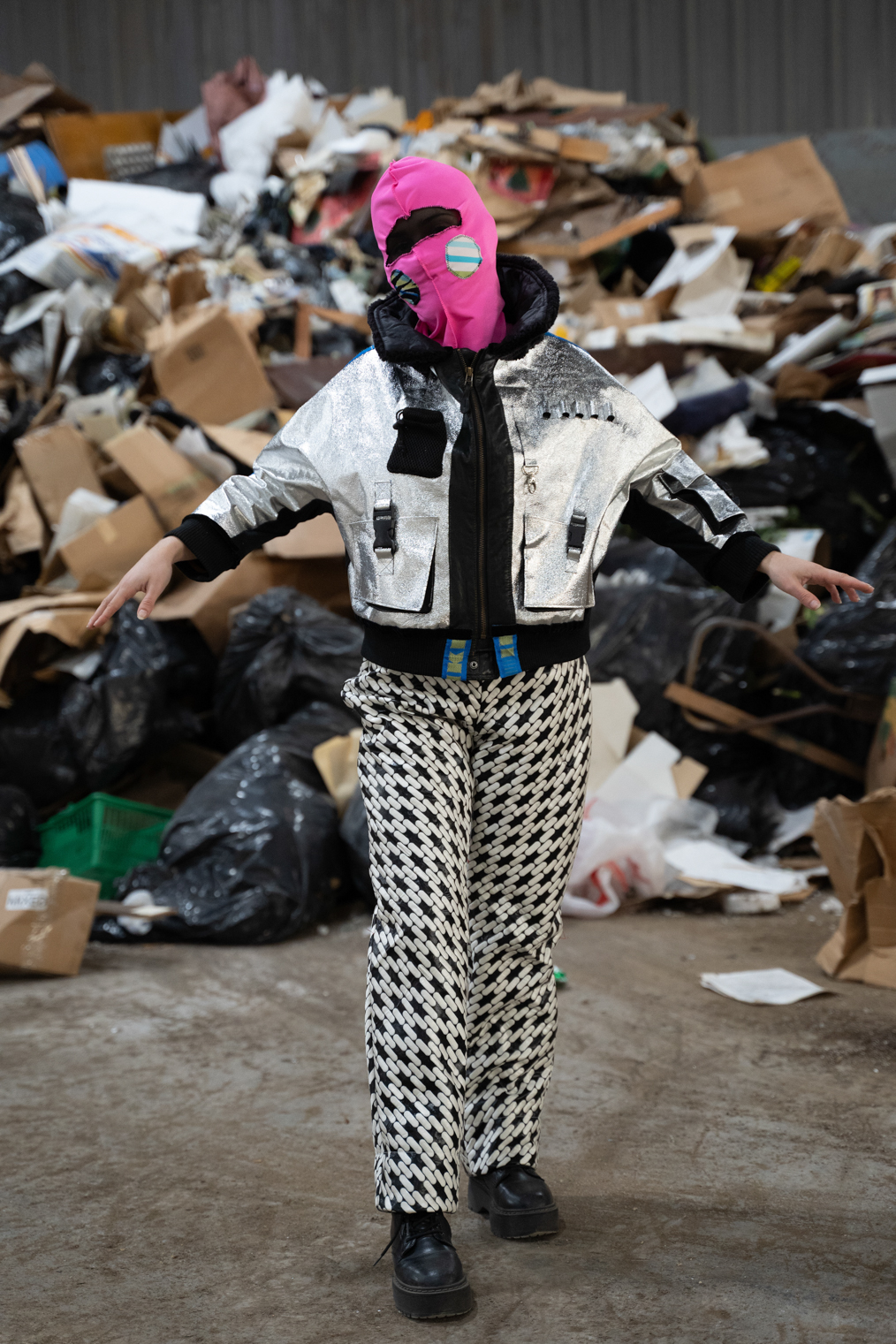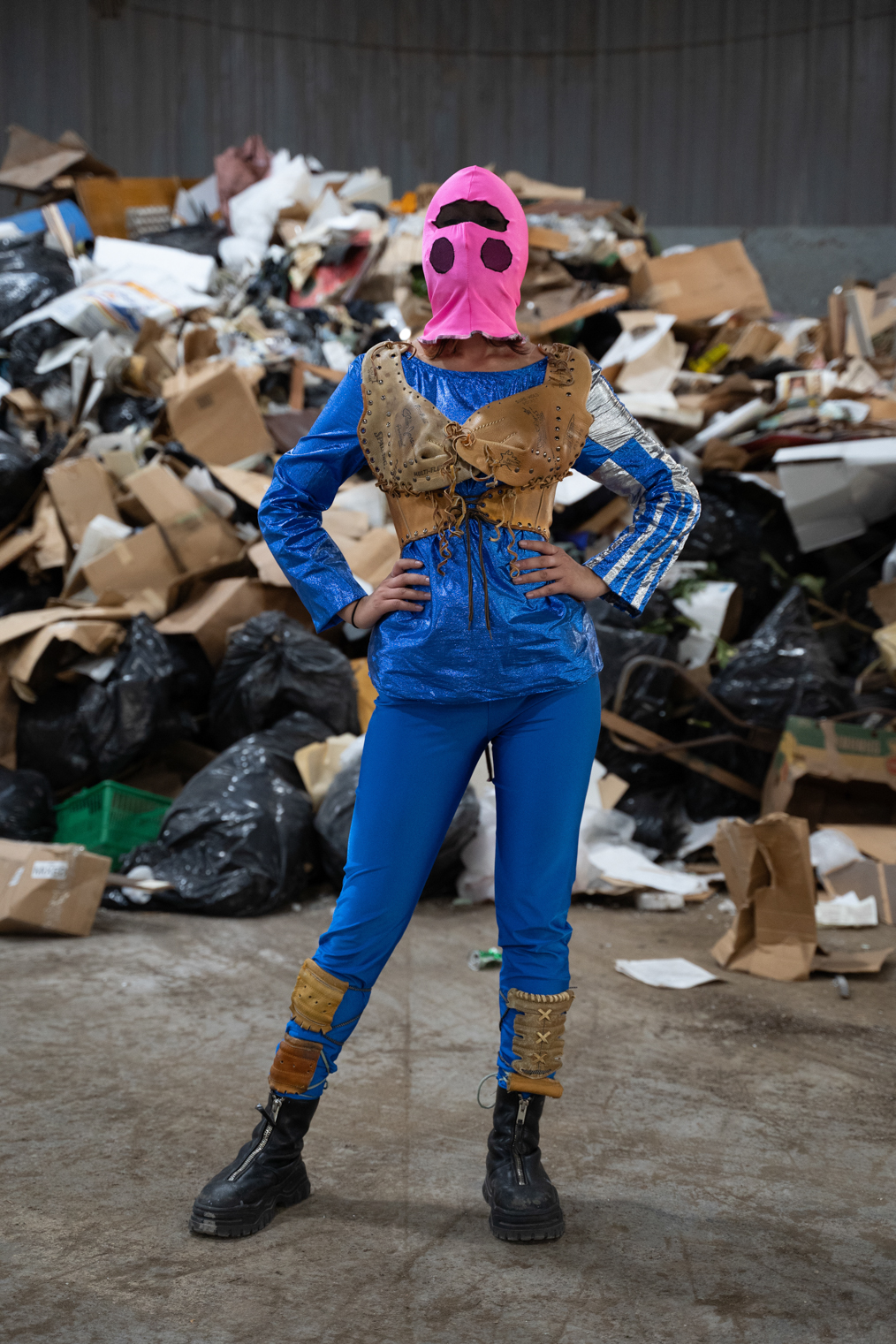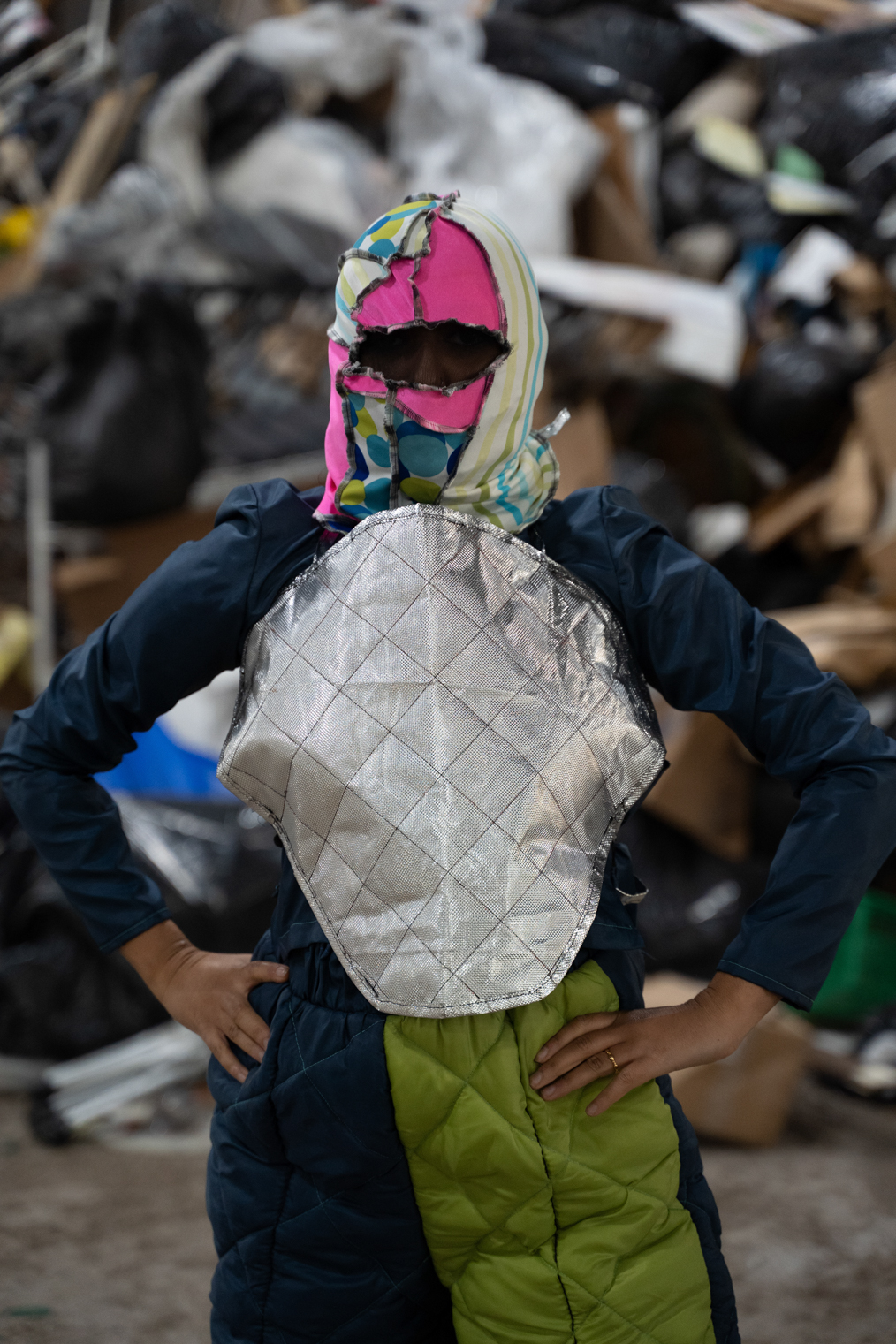Leilah Talukder
Patterning Privacy
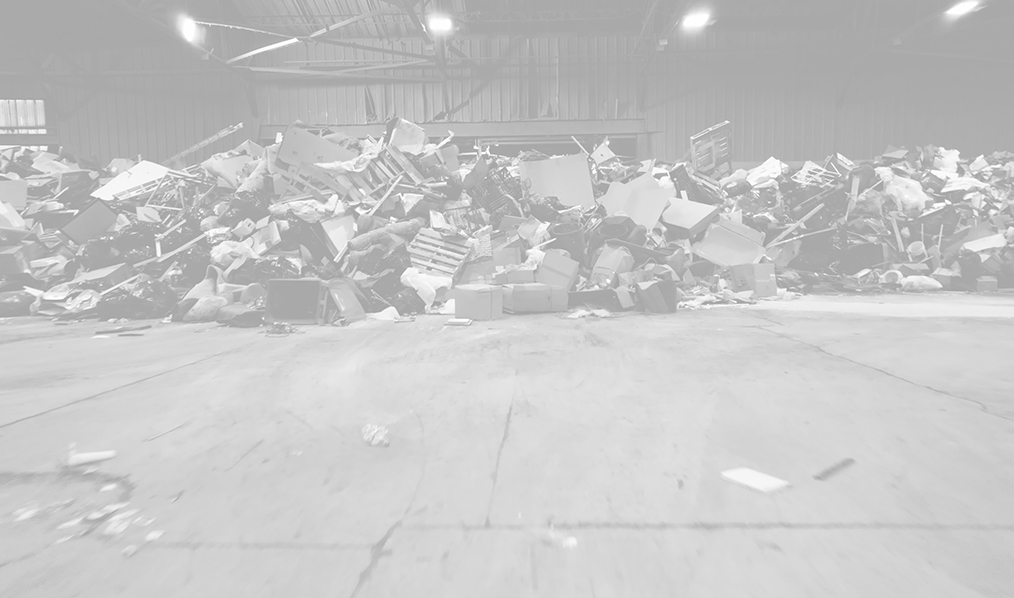
“The idea is not to disappear into the background, but to make collective action for justice unmistakable.”
Privacy Mask #2
stretch material
Chest Plate
windshield sunshade, batting
Weather Pants
sleeping bag, zipper, thread
Privacy Mask #1
stretch material
Reflective Top
unknown scrap material
Chest Armour
baseball gloves, shoe laces, grommets, rivets
Stretch Pants
stretch material, zipper
Shin Guards
baseball gloves, shoe laces, grommets, rivets
“I make garments of all different forms, and as an artist and designer I’m really interested in all the different forms that sustainability can take.”
– Leilah Talukder
“I wanted it to be something that when people looked at it, they felt like ‘oh, I could make that, I could do that myself, I have those materials in my garage,’ with the hopes that it would empower people to make these things for themselves.”
– Leilah Talukder
Written by Weston Teruya
Leilah Talukder utilizes textiles, wearables, and sculpture to explore the role they play in shaping human interactions, desire, and cultural power dynamics. For her exhibition at Recology, Talukder presents a line of wearable pieces that can act as tools in protests for social justice and as resistance against the ever-increasing ubiquity of facial recognition technologies. Fashioned from materials sourced from the Recology Reuse and Recycling Area, Talukder suggests a model for how audiences might create their own jackets, jumpsuits, masks, and vests from what they have available. Rather than opting for the somber, monochromatic designs or high-tech anti-surveillance solutions often used in protest gear, Talukder wields bright colors, contrasting patterns, and repurposed materials in her pieces. Inspired by “dazzle camouflage”—an irregular geometric, black & white pattern that disrupts itself, making the covered object difficult to properly perceive—her work simultaneously embraces tactics of hypervisibility and anonymity. The idea is not to disappear into the background but to make collective action for justice unmistakable.
Through the series of wearables, Talukder repurposes materials and forms often used by military, riot police, and to signal American cultural power. Dazzle camouflage was first used during World War I to cloak Navy vessels. Forms like bomber jackets and jumpsuits hint at fashion’s fascination with repurposed military wear. In a number of pieces in the line, Talukder deconstructs what she calls “the paraphernalia and accouterments of American life,” including baseball catcher’s mitts and recycled denim to stitch together new patterns and textures. In breaking apart and redesigning these shapes and symbols, Talukder suggests the ways they might be transmuted to support movements for justice rather than to suppress collective voices.
Leilah Talukder graduated from UC Berkeley with a BA in Art Practice and History of Art with a research focus in Textiles and Garments from a Global Perspective. While there, she was an on-campus organizer with the group FAST (Fashion and Student Trends) where she produced fashion shows and created a course that taught student designers how to sew and conceptualize their work. Talukder’s work was recently featured in an exhibition at Catherine Clark Gallery.





